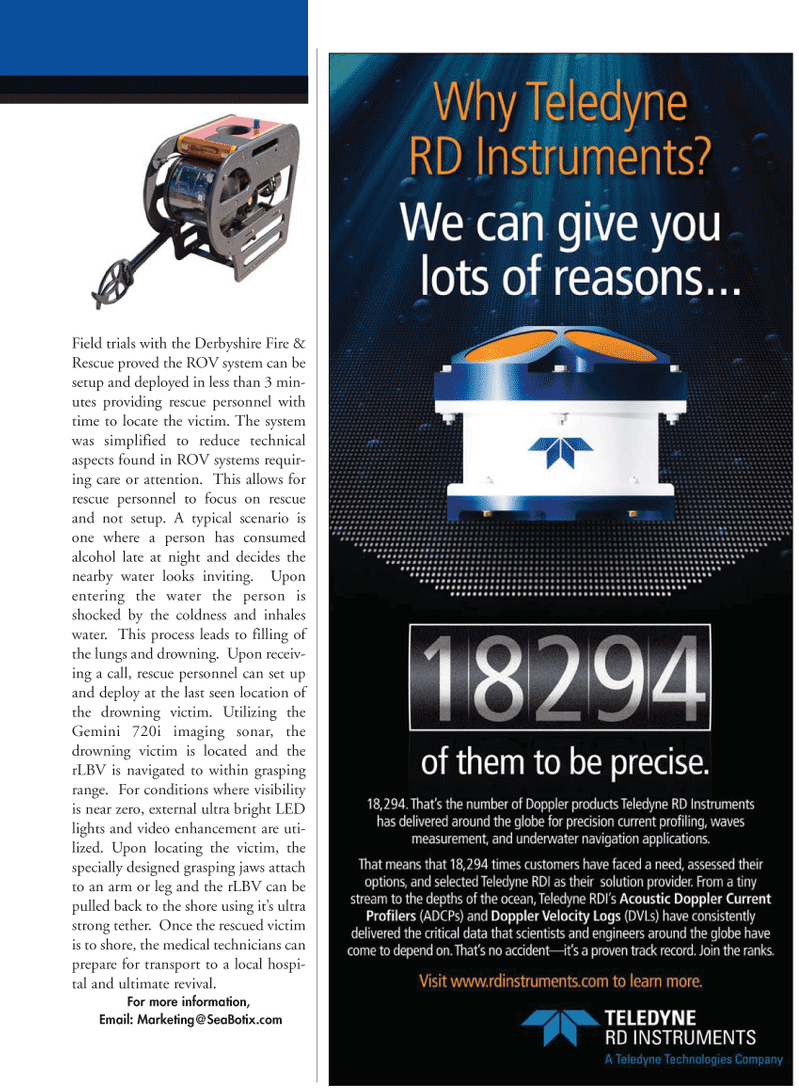
Page 11: of Marine Technology Magazine (September 2010)
Ocean Observation
Read this page in Pdf, Flash or Html5 edition of September 2010 Marine Technology Magazine
Field trials with the Derbyshire Fire &
Rescue proved the ROV system can be setup and deployed in less than 3 min- utes providing rescue personnel with time to locate the victim. The system was simplified to reduce technical aspects found in ROV systems requir- ing care or attention. This allows for rescue personnel to focus on rescue and not setup. A typical scenario is one where a person has consumed alcohol late at night and decides the nearby water looks inviting. Upon entering the water the person is shocked by the coldness and inhales water. This process leads to filling of the lungs and drowning. Upon receiv- ing a call, rescue personnel can set up and deploy at the last seen location of the drowning victim. Utilizing the
Gemini 720i imaging sonar, the drowning victim is located and the rLBV is navigated to within grasping range. For conditions where visibility is near zero, external ultra bright LED lights and video enhancement are uti- lized. Upon locating the victim, the specially designed grasping jaws attach to an arm or leg and the rLBV can be pulled back to the shore using it’s ultra strong tether. Once the rescued victim is to shore, the medical technicians can prepare for transport to a local hospi- tal and ultimate revival.
For more information,
Email: Marketing@ SeaBotix.com

 10
10

 12
12
